Illustration by Kiran Joan for HuffPost
As bodies of COVID-19 victims have piled up this year in Los Angeles County amid the pandemic, local air quality regulators have repeatedly lifted cremation limits to allow hospitals, funeral homes and crematoriums to cope with the “backlog” of dead. The lifting of these pollution restrictions has served as a stark reminder of the staggering, deadly consequences of the pandemic.
It’s also raised another question: What are the environmental impacts of our deaths ― and how can we reduce them?
Since 2015, cremation using fire has become the most popular death care practice in the U.S., with almost 58% of Americans projected to use cremation in 2021, according to data collated by the National Funeral Directors Association.
But as cremation ― which often burns fossil fuels like natural gas ― becomes more commonplace, concerns about its effects on the environment and climate have also been mounting.
Cremating a single corpse typically takes up to three hours of burning and releases almost 600 pounds of carbon dioxide ― the equivalent of a 500-mile car journey ― into the atmosphere. Toxic metals like mercury, which can be found in some dental fillings, and other particulate matter can also be released, though many U.S. crematoriums now have filtration and scrubbing systems that can neutralize these. The filtration systems, however, do not block the release of carbon dioxide.
Some estimates suggest that cremations in the U.S. account for about 360,000 metric tons of carbon dioxide emissions every year. Globally, that number climbs into the millions of metric tons.
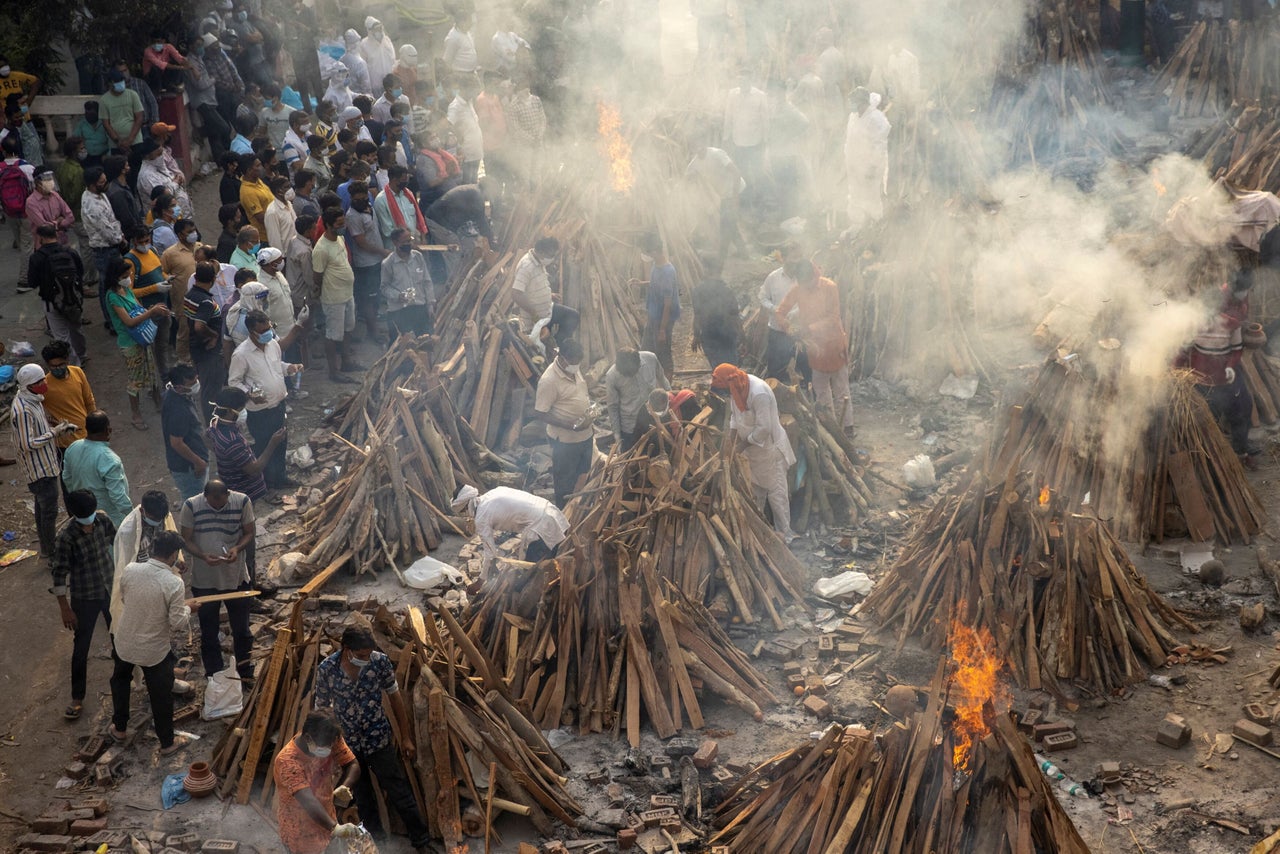
Compared to other sources of greenhouse gas emissions, these numbers may seem relatively small. A single cremation only accounts for a fraction of the average American’s carbon footprint, which is estimated at more than 20 metric tons of carbon dioxide emissions per year.
Still, with most of the world still very much not on track to fulfill the commitments laid out in the Paris climate agreement, an ever-increasing global population, and the burgeoning popularity of cremations worldwide, experts say their environmental impacts should not be dismissed.
“In 1960, only about 3% of people in America were being cremated, so the impact to the environment was negligible,” said Dr. David Sloane, a history and urban planning professor at the University of Southern California. “But if you have 60 to 70% of Americans choosing cremation, that’s millions of people to think about ― and once you add up the numbers globally, you don’t just get a couple of million but many tens of millions, and then the concern becomes more real.”
In many countries, cremation has become the death care option of choice for most people. In China, for instance, the cremation rate is estimated to be around 50%, but officials have said they hope this number will eventually reach 100%. In the United Kingdom and Canada, more than 70% of people choose cremation. In South Korea, the rate is closer to 90%, and in Japan, which is thought to have the highest cremation rate in the world, some 99% of people are reportedly cremated.
Mark Shelvock, a death educator and lecturer at the University of Toronto, notes that the full effects of cremation globally remain unknown because of a scarcity of research.
“There’s still no standardized body of knowledge when it comes to this,” he said. “But what we know for sure is that both cremation and conventional burial negatively impact the environment and the climate crisis we’re in.”
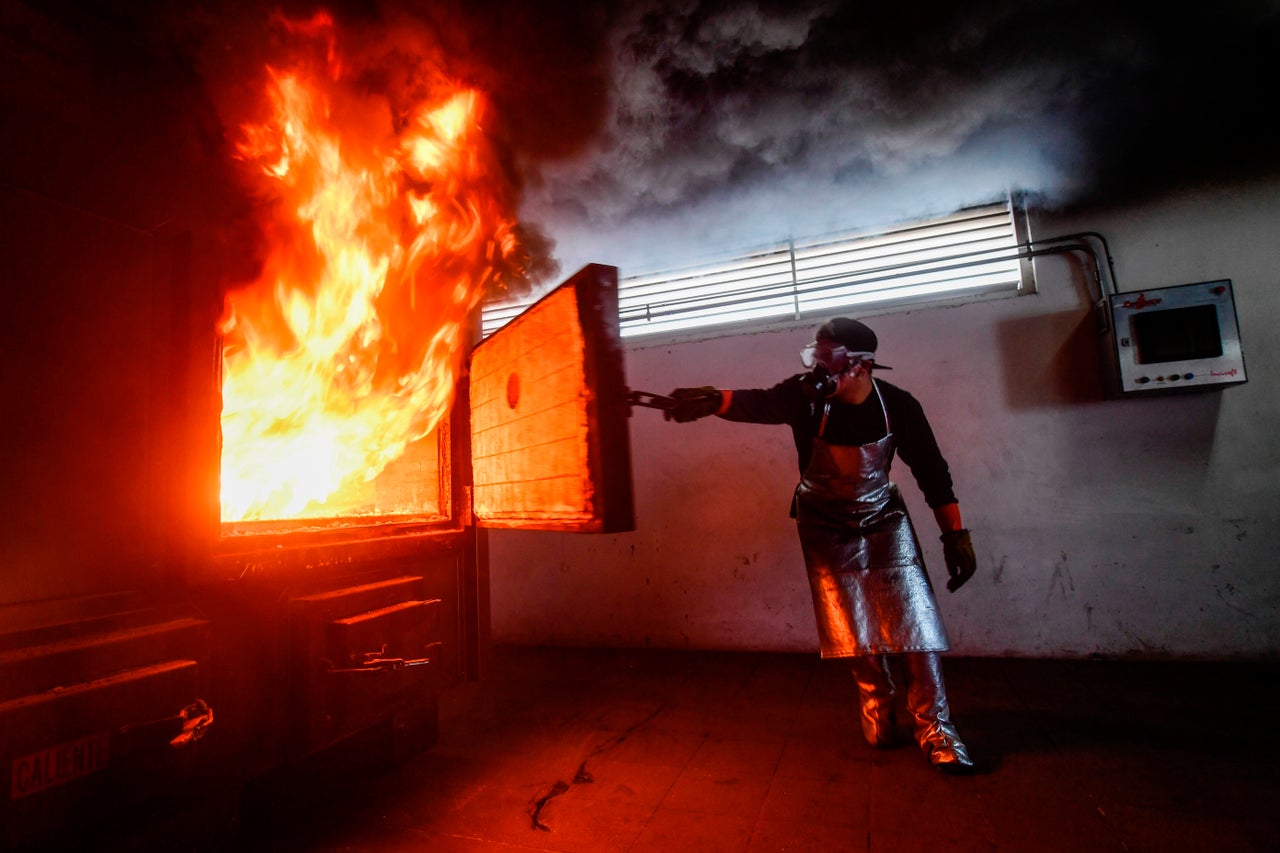
Conventional burial is the second most common death care practice in the U.S., with about 36% of Americans projected to be buried in 2021, per NFDA data.
Like cremation, the environmental impacts of burials are not insignificant.
According to a 2017 study conducted by Elisabeth Keijzer, a sustainability researcher in the Netherlands, burial has a greater environmental impact overall compared to cremation due mostly to its land use. Keijzer notes in her study, however, that cremation has a far greater carbon footprint than burial and that both processes involve many raw materials and have potentially hazardous aftereffects.
Burials in the U.S. typically involve embalming a body before it is placed inside a wood and metal casket, often lined with synthetic fabric. The casket is usually lowered into a grave in which a vault ― essentially a shoebox-type container made of plastic, metal, concrete or a combination of these materials ― has been placed. The vault is arranged over or around the casket to prevent the grave from collapsing when the coffin and body within eventually decompose. According to Sloane, vaults are used mostly for cosmetic purposes nowadays so grounds at cemeteries can be easily mowed and appear uniform.
These burial materials all add up.
Overall in the U.S., an estimated 20 million feet of wood, 4.3 million gallons of formaldehyde and other embalming fluids, 1.6 million tons of reinforced concrete, 17,000 tons of copper and bronze, and 64,500 tons of steel are put into the ground each year for burials, according to data collected by the Green Burial Council.
These staggering numbers, coupled with concerns about climate change, have fueled a burgeoning movement across the country to create and find alternative, less environmentally taxing death care options.
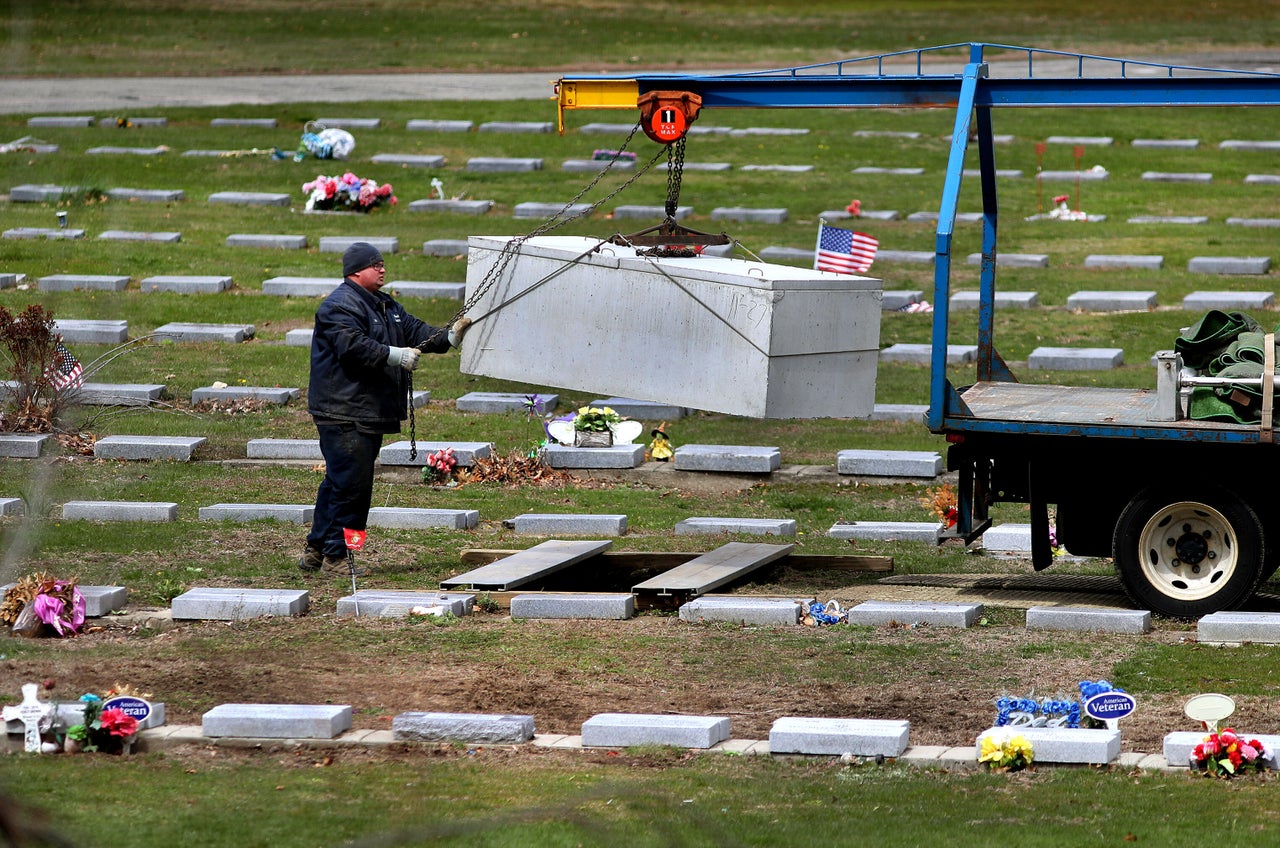
The Green Burial Council, a California-based nonprofit, has been among those at the forefront of this shift. The organization was launched in 2005 to educate consumers about so-called “green” burials, which typically diverge from conventional burials in their emphasis on simplicity and sustainability, and which provide certification for death care providers seeking a “green” label.
Ed Bixby, the council’s president, said the market for green burials was very niche back when the organization was first founded, but that interest in more sustainable death care practices has skyrocketed in recent years.
According to a 2018 survey by the NFDA, nearly 54% of Americans were considering a green burial, also known as natural or simple burial. The practice typically eschews embalming and vaults and is done either on conservation burial grounds or cemeteries that abide by sustainable practices.
“With natural burial, it’s as simplistic as it sounds,” Bixby said. “You open a grave site and bury someone wearing or contained in something biodegradable or nothing at all. They go back the way they came ― you know, dust to dust.”
Green burials haven’t been mainstream since at least the Civil War, Bixby said. After that era, simple burials ― once the norm ― gradually lost favor and were largely replaced by the more elaborate burial customs common today. (There have been exceptions. Traditional Jewish funerals, for instance, typically involve simple caskets and no embalming.)
But over the past two decades and, increasingly, in the past few years, there’s been “a shift to natural burial again,” Bixby said.
“It’s important to teach people their rights so they know they have choices and that their death can make a difference environmentally.”
“What we know for sure is that both cremation and conventional burial negatively impact the environment and the climate crisis we’re in.”
- Mark Shelvock, death educator and lecturer at the University of Toronto
Today, green burial ― which Bixby said a majority of U.S. cemeteries can accommodate ― is the most accessible and widespread green death care option for Americans; but an innovative array of other sustainability-minded practices has begun to sprout in recent years.
Cremated remains, for instance, can now be turned into trees or diamonds or coral reefs. More controversially, two newer death care methods ― alkaline hydrolysis (known also as aquamation, resomation or water cremation) and natural organic reduction, colloquially known as human composting ― have become available in recent years in some U.S. states.
In aquamation, a body’s natural decomposition process is accelerated with the help of water, heat, pressure and potassium hydroxide, which is highly alkaline.
The body is placed inside a steel chamber with a liquid mixture and is rocked side to side for two to three hours as it’s reduced to bones. Like fire cremation, some remains can be collected after the process: the bones, which are crushed into a fine powder and can be kept in an urn or scattered by loved ones; as well as several gallons of an organic, but sterile, liquid that advocates of the process say can be used to grow plants or be easily disposed of via the sewer system.
“Some facilities capture the liquid, and it’s taken away and it’s used on some farmland; it’s an excellent fertilizer,” Nora Menkin, director of People’s Memorial Association, a Washington-based funeral education organization, told National Geographic in 2019 of aquamation. “But most places, it just goes into the municipal sewer system. And a lot of sewer systems actually appreciate it, because it actually helps with the quality of the wastewater.”
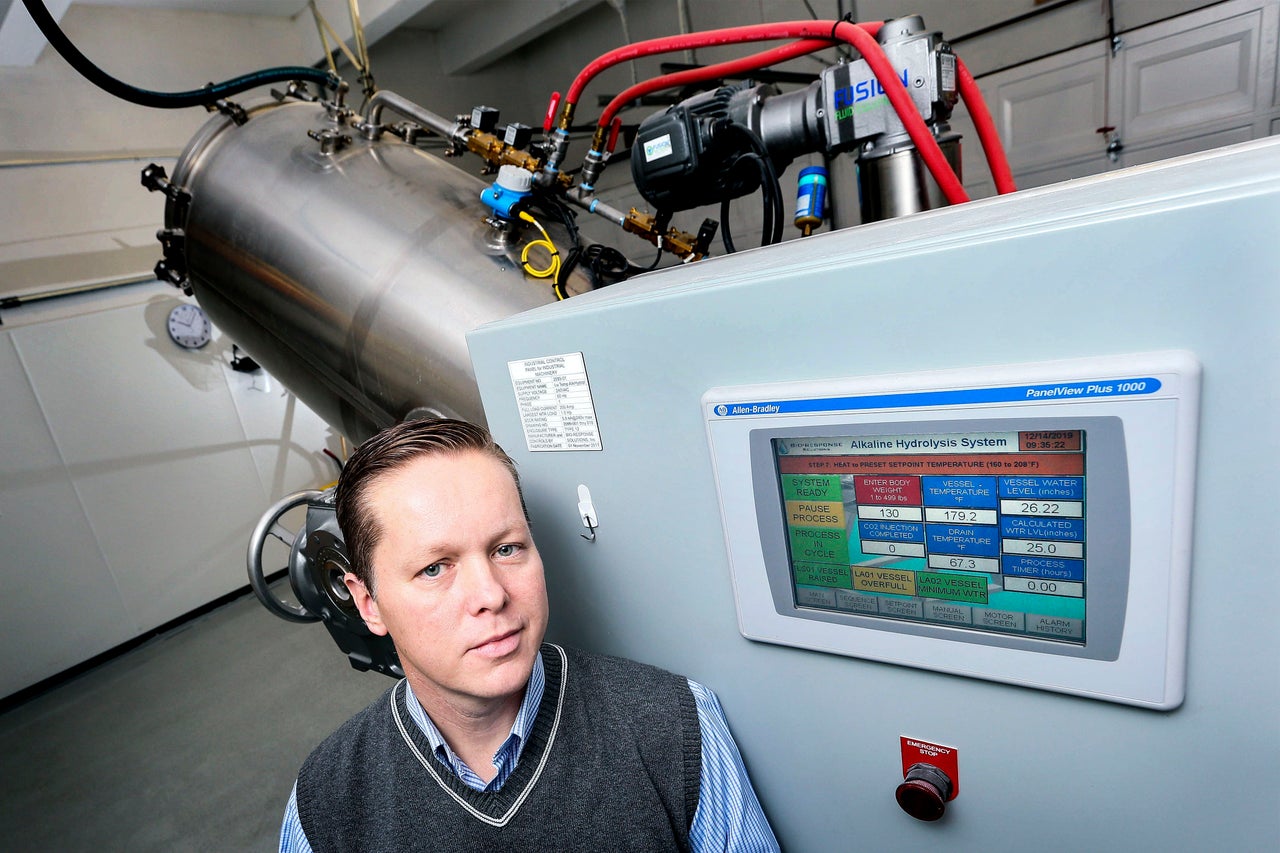
Aquamation, first patented in the U.S. in the 1880s, was first promoted as a way to quickly decompose animal bodies. Then, as The New Republic reported, it began gaining popularity in the early 2000s among pet owners looking for ways to dispose of their beloved animals. The first U.S. state to legalize aquamation for humans was Minnesota in 2003. Today, at least 18 states, including Alabama, California, Colorado, Georgia, Utah and Washington, allow the practice.
Aquamation’s effects on the environment are thought to be far less than those of conventional body disposition methods. Estimates suggest the process uses anywhere from one-tenth to one-seventh of the energy required for cremation, and mercury emissions are not an issue (metals and dental fillings are separated from the body’s bones and disposed of separately).
This was a key reason why Sheila Luna, who was then battling late-stage colon cancer, told her family she wanted aquamation after she died.
“Sheila was a very environmentally conscious person,” her husband, Charles Luna, said from his home in Louisville, Colorado, last month. “She was a nutritionist and clinical herbalist and was a ‘live lightly on the Earth’ kind of person. She believed that the least she could do was to leave a better ― or, at the very least, not a worse ― planet for our children and their children. Choosing water cremation was part of that.”
Sheila died in February 2020 at age 52. Charles and their two daughters respected her wishes and opted for aquamation ― a choice that Charles said helped him in his grief journey and healing after his wife’s death.
“At other funerals I’ve been to, I didn’t get any more closure from the experience. It felt like a mannequin, all made up and artificial, that had been put in this tufted jewel box that was then going to pollute the ground. It never felt like a good celebration of their life,” Charles said.
By contrast, he said, Sheila’s simple wake and funeral at their home, followed by her “gentle” aquamation, had been a “cathartic” rather than traumatic experience for him and his family.
“At other funerals I’ve been to, I didn’t get any more closure from the experience. It felt like a mannequin, all made up and artificial, that had been put in this tufted jewel box that was then going to pollute the ground. It never felt like a good celebration of their life.”
- Charles Luna, whose wife died in February 2020
Aquamation’s perceived gentleness was a major reason Michele Bourgeois chose it for her son, Graham Hebert, after he tragically drowned on New Year’s Day this year. Graham, who was 30, fell into a frozen lake near his home in Littleton, Colorado; it took 38 days for his body to be recovered.
Remembering that horrific time, Michele said in July that she was grateful for the sustainability-focused funeral home that she found to help her with the care of Graham’s body and for the alternative death care options they offered.
“What happened after really helped with my healing. We didn’t pump him with chemicals or trap him in a box or set his body on fire ― an idea that scared me,” Michele said.
“I had never heard of water cremation before this, but when I did, I knew it’s what Graham would have wanted,” she added. “The gentleness of the water appealed to me. He loved the water, he transitioned in water, and he cared about the environment.”
Michele said she also liked the idea that some of Graham’s liquid remains could be used to fertilize trees and plants. She gave some of it to family members and friends who have since used it on their gardens and houseplants. She also used some to water a tree planted near a memorial bench dedicated to Graham at the lake where he died.
“We used Graham’s liquid to nourish the tree, which will benefit the animals that will feed on it and the people who will enjoy its shade,” Michele said. “I love the idea of his physical remains nourishing another living thing. This process has been so much more healing to me than imagining him being stuck in a box that will then become toxic for the environment.”
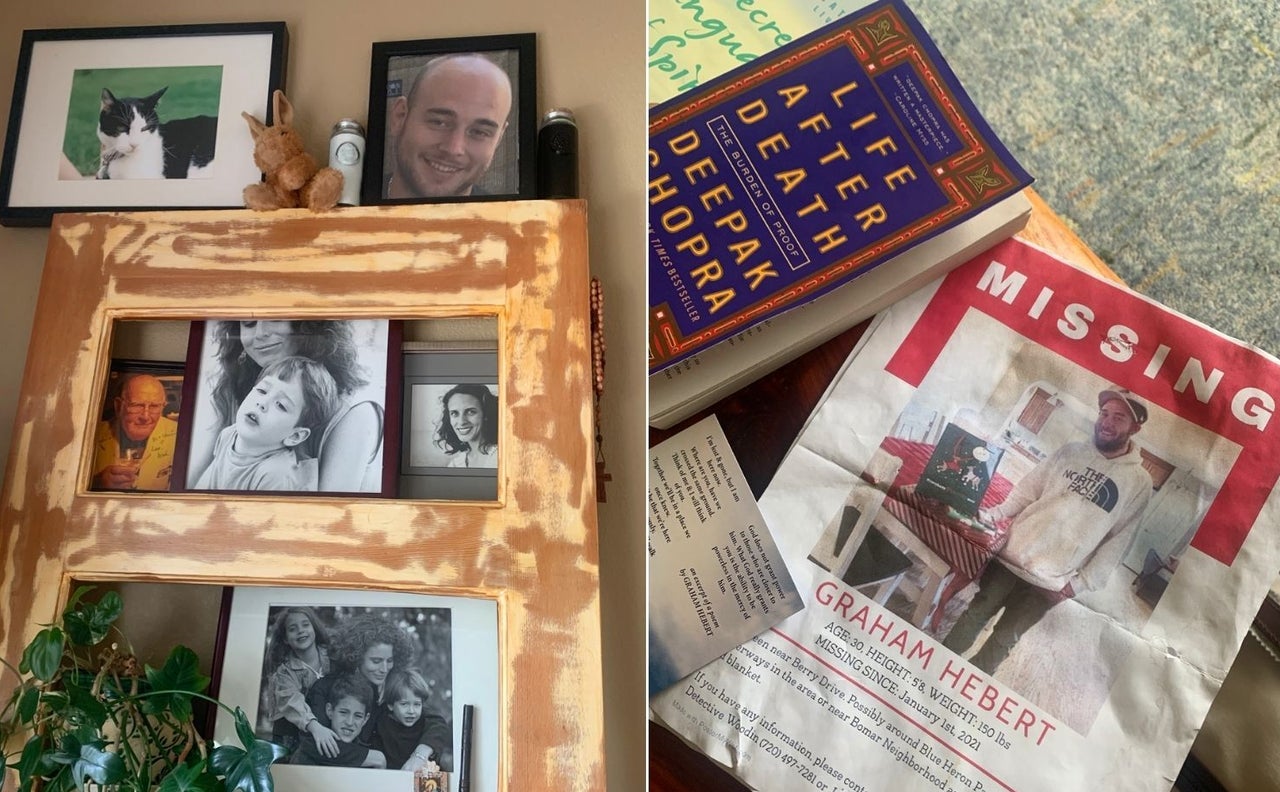
But while aquamation may be appealing to some, the practice has its vocal opponents.
In 2015, a bill to legalize aquamation in Indiana was scuppered after a Republican lawmaker ― and owner of two casket-manufacturing companies ― argued against the legislation, calling the practice “not very human.”
“We’re going to put them in acid and just let them dissolve away and then we’re going to let them run down the drain out into the sewers and whatever,” state Rep. Dick Hamm, owner of Paul Casket Company and Cambridge City Casket Company, said in a speech on the state House floor.
As The New Republic noted, aquamation involves an alkaline substance, not acid, and “similar fluids are flushed down the drain during the embalming process.”
Still, Hamm’s argument has been echoed by lawmakers and religious groups elsewhere in the country.
In New Hampshire, where a bill legalized aquamation for two years before being repealed in 2008, arguments like Hamm’s have helped to block bills to re-legalize the practice.
Republican state Rep. John Cebrowski said in 2009 that “I don’t want to send a loved one to be used as fertilizer or sent down the drain to a sewer treatment plant.” Four years later, amid another push to legalize aquamation, GOP state Sen. Sam Cataldo said he was concerned that the liquid byproducts of aquamation would negatively affect “our groundwater and aquifers.” (There’s no evidence that the process adversely affects water quality.)
The Catholic Church of New Hampshire also spoke out against the practice, saying it lacked “respect” for the sanctity of a human body. Aquamation remains prohibited in the state.
As with aquamation, an “ick” factor and lack of perceived respectability have similarly hindered the adoption of another new green death care method: natural organic reduction, or human composting.
The practice, which essentially “composts” a human body into soil, involves placing a corpse inside a vessel with organic materials like straw, hay or wood chips, as well as microbes to speed up the decomposition process. It is currently only legal in three states: Washington, which was first to legalize it in 2019, and Colorado and Oregon, which only greenlighted the process this year.
Washington is currently the only state where the service is offered; though plans are underway to open facilities in both Colorado and Oregon. Bills to legalize natural organic reduction are also being mulled in New York and California.
Some Catholic groups have been vocal in their condemnation of the practice. The New York Catholic Conference expressly opposed the state’s legalization bill in April, saying natural organic reduction “fails to sufficiently respect the dignity due the deceased.” Catholic associations in Washington, Oregon and Colorado have dissented similarly, as have some in the funeral industry.
One Washington funeral director was quoted in 2019 as saying that natural organic reduction was the “stupidest thing I ever heard of.”
Despite the smattering of ridicule and censure, however, purveyors of the practice say there’s already been a flurry of demand for the service.
Recompose, a Seattle-based death care company that’s been offering natural organic reduction since 2020, said it’s already served 60 families ― one-quarter of them coming from out of state ― since its launch.
“We’ve been full since we opened,” Anna Swenson, Recompose’s outreach manager, said of the company’s early success, adding that more than 900 people have already prepaid for the service.
At Recompose, mechanized vessels inside a temperature-controlled warehouse are used to process bodies. Swenson said it can take between 6 to 8 weeks for a body to “be completely transformed into soil.”
About 1 cubic yard of soil ― the equivalent of about 1 pickup truck bed ― is removed from the vessel. Swenson said families have the option of taking home the soil or donating it to a conservation forest in southern Oregon, where it’s used to replenish degraded land.
Herland Forest, a nonprofit cemetery located in Washington near the Oregon border, uses a slightly different composting process ― though the outcome is similar. There, a manually operated outdoor cradle-and-rack system can take anywhere from two to six months to compost a body, depending on the season, founder Walt Patrick said.
“The cradle-and-rack system was inspired by a baby being rocked in a cradle. It’s a similar thing, but in this case, you’re going out of this world, not into it,” Patrick said of the process.
Environmental concerns are a major motivator for people choosing natural organic composting, Patrick and Swenson said of their clients.
“Similar to aquamation, natural organic composting uses about one-eighth of the energy required for cremation or burial,” Swenson said.
She added that some clients simply “like the idea of literally returning to the earth.”
“A lot of people are disgusted by the funeral industrial complex,” noted Patrick, referring to the corporatization of the U.S. funeral industry, which has been described as the “most expensive and corporate in the world.”
“There’s a lot of exploitation of vulnerable, grieving people,” he said. “We have a lot to learn when it comes to death care and how to better facilitate that process.”
Competitive and transparent pricing also appears to be a driving force behind the increasing demand for alternative death care practices. Dying is an expensive business: According to the NFDA, an average burial and funeral ceremony cost about $8,500 and an average cremation and funeral cost about $6,300.
The funeral industry has been criticized for opaque pricing. In a 2015 report, the Consumer Federation of America and the Funeral Consumers Alliance lambasted the industry for its lack of transparency.
“The huge price ranges for identical funeral services within individual areas indicate that these markets lack effective competition,” Stephen Brobeck, the consumer federation’s executive director, said in a statement. “The lack of price competition is unfortunate given the relatively high cost of funeral services and the reluctance of many bereaved consumers to comparison shop for these services.”
In contrast, transparent pricing appears to be a common thread among providers in the green death care space.
Karen van Vuuren, co-founder of The Natural Funeral in Boulder, Colorado, one of the first full-service green funeral homes in the state, said it was a no-brainer for them to have all their prices clearly listed on their website.
“I just think we owe it to consumers to have pricing that’s really transparent,” she said.
Green burial packages can cost between $1,000 and $4,000, while aquamation can cost between $1,500 and $3,000. Natural organic reduction can cost upwards of $3,000 and can vary significantly, depending on whether the body needs to be transported out of state.
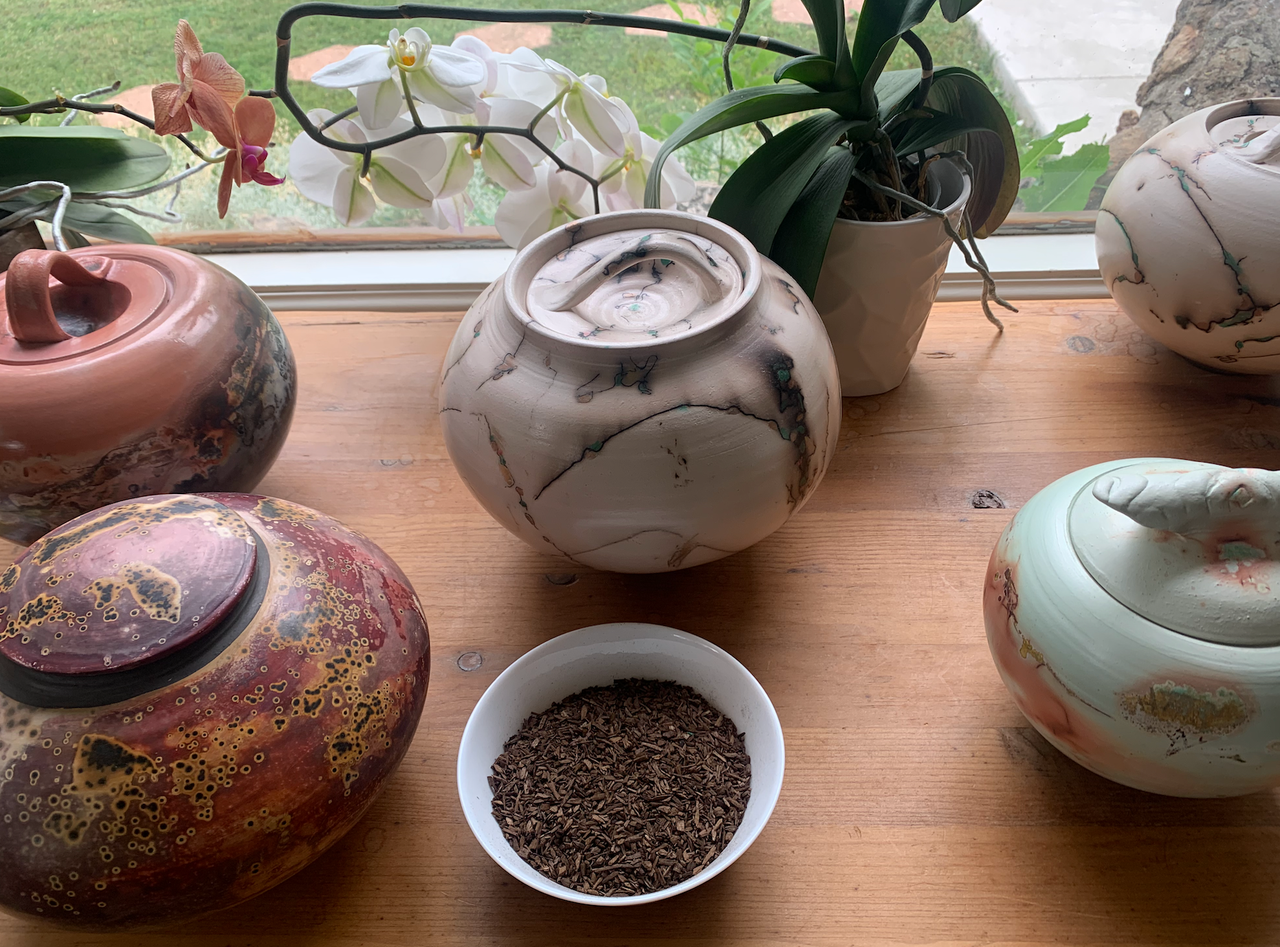
While these alternative death care options remain inaccessible to many Americans ― and continue to be shunned by some ― experts say they’ll likely grow in popularity over time and will eventually become more mainstream.
Sloane, who authored “Is The Cemetery Dead?” in 2018, pointed out that people in the U.S. and Europe had been “horrified” by the idea of fire cremation when the first crematoriums were opened in the late 1800s.
“The New York Times editorialized against it. The Catholic Church banned it. It was seen as anti-religious, anti-clerical, pagan,” said Sloane.
Just as cremation gained acceptance over time, alternative death care methods will similarly expand, Sloane said, adding: “The question is, which of the choices will become more prevalent and which will diminish? And how fast will this change happen? That’s still unknown.”
It appears the COVID-19 pandemic may have played a part in expediting this shift.
“During the pandemic, we’ve been faced with something that we rarely talk about in life ― we’ve been faced with our mortality,” Bixby of the Green Burial Council said. “People have been forced to come to grips with it, to become more proactive and less fearful of death ― and looking into what they want for themselves and their loved ones after death.”
In California earlier this year, state Assembly member Cristina Garcia, who has advocated for the legalization of natural organic reduction there, cited the staggering pandemic death toll as a reason to push for more sustainable death care practices.
″[The pandemic situation] is another sad reminder that we must legalize a more environmentally friendly option as soon as possible,” Garcia said in a February statement.
Ultimately, people in the green death care space say the most critical need is to provide consumers with more options for their after-death care ― and to ensure they’re educated on the choices available to them.
“We’re not here to tell people what’s right for them or what ‘respectful’ means,” Swenson of Recompose said. “Whatever people want to choose, it’s their choice. It’s just about providing additional choices that people can have access to.”
Discussing these options openly is also key, experts say, to creating a more healthy and holistic approach to death ― and death care, too.
“One of the challenges of talking about green death practices is that death is still a taboo topic. It’s still not part of everyday conversation,” said Shelvock, the death educator. “We need to start normalizing these conversations about our mortality; we need to become more open-minded and more curious towards how we’re going to honor our loved ones and ourselves eventually. The more we can normalize talking about death, the better death systems we can create.”